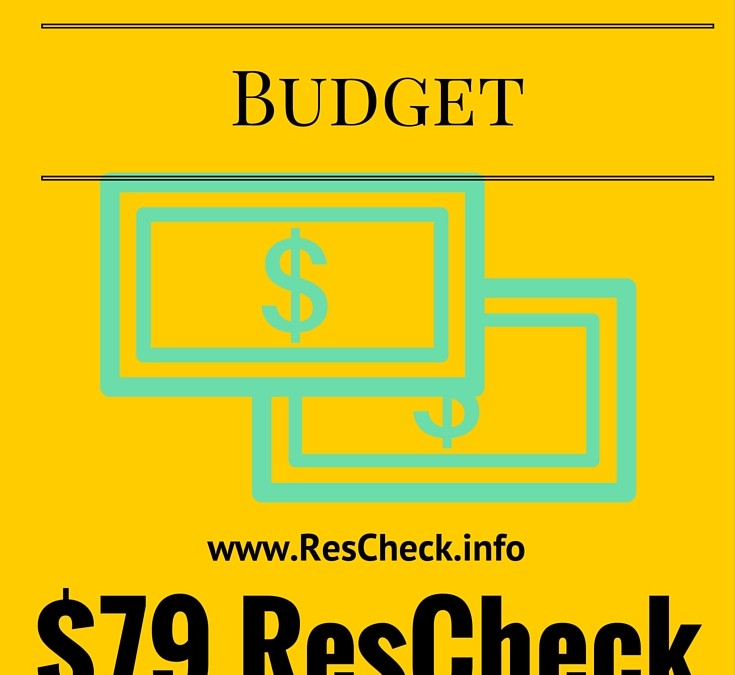Custom REScheck Report
- Any Plan
- Any Size
- Any Code
- Any State
- 24 hour turnaround or it’s free.
The first question that needs to be asked of a project is one that will help guide your entire process. Through the first four chapters I am going to help you answer this question by creating four principles that will steer your project. Your Budget, Needs, Land, and Design are the four major items that will have the most bearing on your green home kit or package. We will review these items in depth before buying materials or speaking to a green home contractor.
If at any time these four principles are taken for granted the entire project could begin to crash in a tailspin. It sounds bad, and it really can be. For the thousands of unknowing buyers who build a green home each year it is always a real possibility. Luckily for you, I am going to take you by the hand, and guide you through the best practices and steps to take when creating your Green Home.
By the end of the blog you will know more about a green home or package than most people working in the construction industry. Plus you will have a full grasp of your project’s scope and essential details before ever placing the first call to a material or installation provider.
The budget of the project is the driving force and will move your project along. It is impossible to build a home that uses $100,000 worth of materials and labor for $50,000. That sounds logical right?
The old adage your grandfather told you, “You get what you pay for,” is still true today. However, I will show you how to lower the initial costs of your green home. This guarantees you get the highest quality materials, best installation services, and spend the least amount of money. All this will happen from the start. Does this sound too good to be true? Read on.
Establishing what can be afforded is paramount. This concept is as simple as the paycheck you expect after a week of your own labor at a daily job. Everyone involved in your project will expect to be paid in a timely fashion for managing your materials, labor, permits, plans, and construction. These project participants must be paid with liquid cash. If not, the sound of your project coming to a screeching halt will be heard all around the neighborhood.
If you have the cash on hand to finish your project then you only must convince yourself starting the project is feasible. If you will borrow even the slightest percentage to complete the green home you will then invite dozens of others in to the project. Bankers, appraisers, and loan officers all get to add their input. They will begin to scrutinize all aspects of your project, from every angle.
In both cases you must establish a budget. What is the total amount you can afford to spend? I recommend taking this number and deducting 15% right off the top. Most construction experts recommend adding 15% or more to your total number, because you will always “go over budget.” I find this approach completely irresponsible.
The 15% that you deduct from your total feasible budget will be set-aside in an easily accessible liquid emergency fund. This will be used for post completion projects, issues, and unforeseen expenses that arise during and after the construction process.
If your total budget comes to $100,000 using the worksheets in this blog then before starting you will take a lump sum of $15,000, and place it in an untouchable construction emergency fund. Your total budget would now be $85,000. Everything we do through the rest of this blog will guide you to meeting this goal.
By reading this blog you have taken the first step to getting the most out of your green home project and using only the funds you chose to allocate.
If you cannot afford to create an emergency construction fund it is plausible that you might not be able to afford to build the project at this time. You can still prepare your plan, budget, and finish the blog. I only ask that you hold off on entering any major agreements until you are on a more solid financial footing. Your goal of building should be to enjoy your home with your friends and family. Not to eat cold beans in the corner of a partially finished, unheated structure wishing you had an emergency fund. Just remember I suggested the concept in the second chapter of Green Home, as you gulp down your next spoonful.
What is a good way to come up with your own preliminary budget number for a home? I recommend a basic exercise. Determining your project’s feasibility can best be calculated using a modified cost per square foot workshop that I present to you in the following pages of this blog. I will guide you through the foundation, main floor, and second floor of your green home. This will help you establish a preliminary budget for your green home. Answer the questions then calculate the approximate cost per square foot for each level of your home in the following chapters.
If you are building this home with a partner now is not the time to work on your own. Mention that you are reading the blog to your wife, husband, or other construction partner. Then fill out the following pages simultaneously.
Purchasing an additional copy of the blog may be a good idea to make sure everyone is on the same page, with your green home project, right from the start. Also all the worksheets from this blog can be printed for free at my website, www.Jobe.ws.
